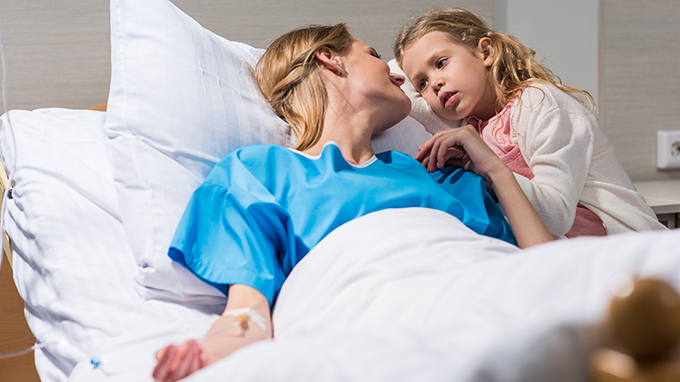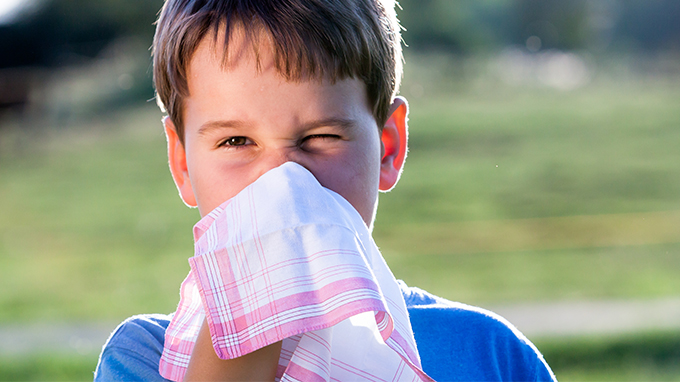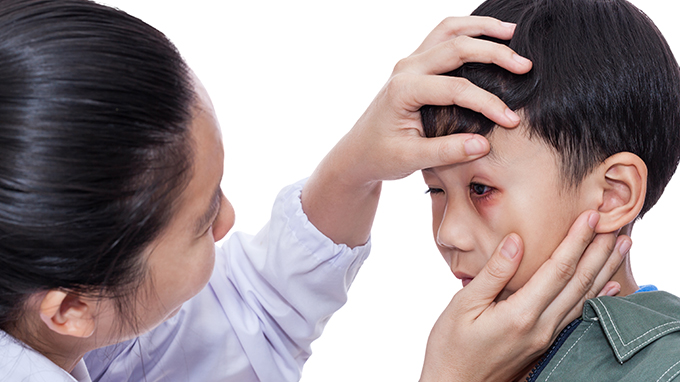Recommendations for clinical treatment of severe cases of enterovirus 71 (EV71) infection
Hand-foot-mouth disease is an acute infectious disease caused by enterovirus. Severe cases are mostly caused by enterovirus 71 type (E V 7 1) It is caused by infections and occurs mostly in preschool children. The condition is dangerous and the mortality rate is high. Some infants and young children can cause encephalitis, cerebrospinal meningitis, brainstem encephalitis, leading to increased brain edema, intracranial pressure, neurogenic pulmonary edema, and circulatory failure can be life-threatening in the short term. In order to effectively reduce the mortality of severe cases of enterovirus (EV71) infection, this recommendation is specially formulated.

I. Key points of clinical staging and diagnosis
According to the pathogenesis and clinical manifestations, EV71 infection is divided into 5 stages.
Phase 1 (hand, foot, and mouth rash): The diagnostic points are:
①Fever: mostly irregular fever, or transient fever, some cases may not have fever;< /p>
②Rashes: rashes on the hands, feet, mouth, buttocks (patchy papules, papules, small herpes), which may be accompanied by cough, runny nose, loss of appetite and other symptoms. The cases in this period are common cases of hand, foot and mouth disease, and the vast majority of cases recovered in this period.
Phase 2 (Nerve System Involvement Period): The diagnosis points are:
①Disease course: mostly occurs within 1-5 days of the disease course;
②Fever: Sustained hyperthermia or repeated hyperthermia;
③Central nervous system damage, manifested as poor mental state, drowsiness, irritability, headache, vomiting, irritability, limb shaking, acute limb weakness, neck stiffness and other meningitis, Encephalitis, polio-like syndrome, signs of encephalomyelitis.
④CSF examination is a change of aseptic meningitis. CT scans of the brain and spinal cord showed no positive findings, and MRI showed abnormalities. This case is a serious case of hand, foot and mouth disease, and most cases can be cured.
Phase 3 (Pre-cardiopulmonary failure): The main points of diagnosis are:
①Disease course: mostly occurs within 5 days of the disease course;
②Age: 0 -3 years old;
③Respiratory abnormalities: increased breathing, breathing frequency in quiet state exceeds 30~40 times/min (by age);
④Circular dysfunction: Increased heart rate (>140-150 beats/min, according to age, excluding increased body temperature or crying), cold sweating, cold limbs, skin patterns, increased blood pressure, and prolonged capillary refill time (>2 seconds);< /p>
⑤ Blood glucose increases, peripheral blood leukocytes (WBC) increases, and cardiac ejection fraction may be abnormal. This case is a severe case of hand, foot and mouth disease. Timely discovery of the above-mentioned manifestations and correct treatment are the key to reducing the case fatality rate.
Phase 4 (Cardiopulmonary Failure): The diagnosis points are:
① Mostly occur within 5 days of the disease;
②Respiratory abnormalities: shortness of breath or Distress, slowed breathing or abnormal rhythm, cyanosis of the lips, cough pink foamy sputum or bloody fluid;
③Continuous blood pressure reduction or shock.
④Some cases are mainly manifested by severe brain failure, pulmonary edema is not obvious, frequent convulsions, severe unconsciousness and central respiratory and circulatory failure. This case is a critical case of hand, foot and mouth disease, with a high case fatality rate.
Phase 5 (Recovery Period): The main points of diagnosis are: body temperature gradually returns to normal, dependence on vasoactive drugs gradually decreases, symptoms of nervous system involvement and cardiopulmonary function gradually recover, and a few may leave symptoms of nervous system sequelae .
Second, early identification of severe cases
Infants under 3 years old, course of disease within 4 days, pay attention to sympathetic hyperactivity. If one of the following conditions occurs, it is suggested to be a severe case:
(1) Sustained high fever: body temperature (armpit temperature)>39℃, the effect of conventional fever is not good;
(2 ) Nervous system performance: appear to be mentally depressed or irritable, vomiting, easily startled, frequent startling, limb shaking, weakness, standing or sitting instability, etc.;
(3) abnormal breathing: increased breathing Fast, quiet breathing frequency of more than 30~40 times/min (by age), need to be alert for neurogenic pulmonary edema;
(4) Circulatory dysfunction: heart rate increase (>140-150 times /min, according to age, exclude elevated body temperature or crying and crying), cold sweating, cold limbs, skin patterns, increased blood pressure, prolonged capillary refill time (>2 seconds);
(五) Increased peripheral blood white blood cell count: more than 15×109/L, excluding other infection factors;
(VI) Increased blood glucose: Stress hyperglycemia occurs, blood glucose>8.3mmol/L.
3. Indications for transfer to a tertiary hospital PICU
(1) In severe cases, one of the following cases should be transferred to PICU for treatment in time .
1. On the basis of continuous drowsiness, vomiting and startle, convulsions, disturbance of consciousness (stiffness, delirium, sleepiness, lethargy, coma), limb paralysis, ataxia.
2. Injury of cranial nerves, involuntary eye movements (eyes looking up, fixed eyeballs to one side, eyeballs twitching, nystagmus, cross-eyed eyes, etc.).
3. Shortness of breath (more than 40 times/min), cyanosis, rapid development of lung lesions in a short period of time, pulmonary edema, pink foamy sputum, and pulmonary hemorrhage.
4. Circulatory disorders: tachycardia (over 160 beats/minute) or too slow, cold limbs, pale complexion, weak pulse, increased or decreased blood pressure.
(2) Precautions for referral. Each time the attending physician rounds up, critical cases must be judged against the standard, and when indicated, they should be referred in time under the escort of a professional. If pulmonary edema, pulmonary hemorrhage, shock and other respiratory and circulatory failure have occurred, and vital signs are unstable at any time and life-threatening, they should be treated on the spot, and please consult with the expert team at the next level to guide the rescue.
Four, the monitoring and management of PICU
(1) The PICU must have pediatric doctors and nurses who have received standardized training or advanced training, equipped with pediatric ventilators, Blood gas analyzers, monitors, infusion pumps and other necessary equipment have separate areas.
(2) Children transferred to PICU are managed according to critically ill patients and need special care. Strengthening the awareness of time is life and paying attention to changes in the disease at any time.
(3) The doctor in charge must be a pediatrician, and consult with the superior doctor to confirm the condition. There are three levels of rounds or director rounds every day, and the business director visits daily.
(4) Continuously monitor respiration, heart rate, blood oxygen saturation, measure pulse, blood pressure, capillary refill time once every hour, and count the 24-hour water output (especially urine output).
(5) Detailed neurological examination (including the sixth, seventh, nineth, tenth, eleventh and twelve pairs of brain nerves, pupil size and light response), cerebellar signs examination.
(6) According to the condition, the arterial blood gas analysis and blood glucose are measured every 1-8 hours. Test blood routine and electrolyte daily. Dynamic review of chest radiographs. Liver and kidney function and myocardial enzymes are tested every 1-3 days.
(VII) On the basis of daily dynamic monitoring of blood gas, blood sugar, and blood picture, selective implementation of ECG, cardiac ultrasound, cerebrospinal fluid, EEG, MRI and other inspection items.
(8) Send the pathogen sample in time and confirm the pathogen.
Five, the treatment of critical cases
(1) Three measures for early strengthening.
1. Early reduction of intracranial pressure: when neurological manifestations such as sustained startle occur, limit the intake, 60ml-80ml/kg.d, give the following dehydrating drugs:
( 1) Mannitol: 0.5g/(kg.time), once every 4 to 6 hours, intravenous injection, adjust the dosage interval and dose according to the condition. In severe cranial hypertension or cerebral hernia, the dose can be increased to 1~2g/(kg.time), 2~4h 1 time;
(2)10% glycerol fructose: 0.5-1g/(kg.time), 4-8h 1 time, rapid intravenous infusion;
(3 ) Diuretics: For those with cardiac dysfunction or pulmonary edema, furosemide 1-2mg/kg should be used first, and then evaluated after using other dehydrating agents or other treatment measures (such as using a ventilator for tracheal intubation).
(4) Human serum albumin: Improve colloid osmotic pressure and reduce cerebral edema. Usage: 0.4g/(kg. times), often used in combination with diuretics.
2. Early tracheal intubation:
(1) Indications of tracheal intubation:
① Shortness of breath, slowing down or rhythm changes;
>②The airway secretions are pale red or bloody;
③Short rales appear in the lungs in the short term;
④Chest X-ray examination shows lungs exuded Sexual Lesions;
⑤ Abnormal blood gas analysis: pH below 7.25, PaCO2 shows excessive ventilation or CO2 increases, PaO2 decreases, BE negative value is above 10.
⑥ Frequent convulsions or deep coma;
⑦ pale or cyanosis, blood pressure decreased.
(2) Mechanical ventilation mode: commonly used pressure-controlled ventilation, other modes can also be selected, high-frequency oscillatory ventilation can be used for those with air leakage or refractory hypoxemia.
(3) Mechanical ventilation adjustment parameters:
①Objective: To maintain PaO2 above 60-80mmHg and carbon dioxide partial pressure (PaCO2) between 35-45 mmHg to control pulmonary edema and lung Bleeding.
②People with pulmonary edema or hemorrhage are advised to adjust the parameters of the ventilator: inhaled oxygen concentration 60%-100%, PIP20-30 cmH2O (including PEEP), PEEP6-12 cmH2O, f20-40 times/min, tidal volume 6-8 ml/kg. The ventilator parameters can be adjusted up and down in time according to the change of the disease. If the pulmonary hemorrhage is not controlled or the blood oxygen is not improved, PEEP can be increased every time 2cmH2O, generally not more than 20cmH2O, pay attention to adjust the PIP at the same time to ensure that the tidal volume is stable.
③People with central respiratory failure only, inhaled oxygen concentration 21%-40%, PIP 15-25cmH2O (including PEEP), PEEP 4-5cmH2O, f 20-40 times/min, tidal volume 6-8ml/kg.
④Respiratory management: Avoid frequent and prolonged sputum suction to reduce airway pressure, and keep the airway open to prevent blood clots from blocking the tracheal tube.
In addition, sedative and analgesic drugs are given appropriately, commonly used drugs include: midazolam 0.1-0.3mg/(kg·h), fentanyl 1-4μg/(kg·h); prevent ventilator Associated pneumonia and ventilator-associated lung injury.
(4) Indications for withdrawal:
①Spontaneous breathing returned to normal, cough reflex was good;
②Oxygenation index (OI=PaO2/FiO2× 100) ≥300mmHg, chest radiographs improved;
③Improved state of consciousness;
④circulatory stability;
⑤No other life-threatening complications.
(5) extracorporeal membrane oxygenation (ECMO) application: Although ECMO has successfully treated many patients with cardiopulmonary failure, there is little experience in treating severe cases of EV71 infection. When severe cases of EV71 infection are not improved by mechanical ventilation, vasoactive drugs and liquid therapy, ECMO may be considered. ECMO should not be used in patients with cerebral failure.
3. Early anti-shock treatment: According to the six criteria for early manifestation of septic shock, blood volume should be expanded in time for those who meet more than three, and normal saline 10-20 should be used. Intravenous infusion of ml/kg quickly, and then evaluated. According to the specific conditions of cerebral edema and pulmonary edema, while supplementing and removing, it was decided to administer intravenous drip again and the required amount for 24 hours to correct the shock and improve the circulation in time.
(2) Grasp the three basic treatments.
1. Prompt use of adrenal glucocorticoids: Indications: Glucocorticoid therapy may be given in Phases 3 and 4 as appropriate. Phase 2 generally does not advocate the use of glucocorticoids. Optional methyl prednisolone 1-2mg/(kg·d), hydrocortisone 3-5 mg/(kg·d), dexamethasone 0.2-0.5 mg/(kg·d). When the condition is stable, stop as soon as possible.
2. Master the indications of intravenous immunoglobulin: the recommended indications are: mental depression, frequent limb shaking; acute limb paralysis; breathing frequency in quiet state exceeds 30-40 times/min (press Age); cold sweating, cold limbs, skin pattern, heart rate increase >140-150 beats/min (according to age). According to 1.0 g/(kg·d) (continuous application for 2 days) application. The use of IVIG in Phase 4 has limited efficacy.
3. Reasonable application of vasoactive drugs:
(1) Phase 3: Hemodynamics in this phase are often high power and high resistance, manifested by skin patterns and cold limbs , But not in a state of true shock, the main use of vasodilator drugs. Commonly used Milinone injection: load 50-75μg/kg, maintenance 0.25-0.75μg/(kg·min), generally no more than 72 hours. People with high blood pressure should control their blood pressure below the level of severe hypertension and normal blood pressure above this age. Phentolamine 1-20μg/(kg·min), or sodium nitroprusside 0.5-5μg/(kg·min), generally Start with a small dose and gradually increase the dose and gradually adjust to the appropriate dose.
(2) Phase 4: Treatment is the same as Phase 3. If blood pressure drops below the lower limit of normal at the same age, vasodilators should be discontinued, and positive muscle strength and boosting drugs can be used. Dopamine (5-15μg can be given /kg·min), dobutamine (2-20μg/kg·min), epinephrine (0.05-2μg/kg·min), norepinephrine (0.05-2μg /kg·min) etc. Catecholamines should be started at low doses, preferably the smallest dose that can maintain near normal blood pressure.
If the above drugs are not effective, you can try levosimendan (starting with 12-24μg /kg loading dose intravenously, and then maintained at 0.1μg/kg·min), vasopressin (intravenous injection of 20μg/kg every 4 hours, medication time depends on the improvement of hemodynamics), etc.
(3) Focus on symptomatic supportive treatment.
1. Cool down.
2. Sedation and anti-convulsion: stability, phenobarbital sodium, chloral hydrate, etc. can be selected. Note that the airway is unobstructed or applied after intubation. If the effect of ordinary sedatives is not good, consider giving midazolam or morphine. If you need to use such sedative drugs, you must pay attention to blood pressure. If these drugs cause blood pressure to be lowered, you should stop using it immediately.
3. Protect the function of each organ: pay special attention to the treatment of neurogenic pulmonary edema, shock and cerebral hernia.
4. Correct the imbalance of internal environment.
Related Articles

- What are the symptoms of Crohn's disease?
- 2020-12-17

- child
- The night shift on this day, I almost "collapse", explaining again and again, repeating it over and over again, as if rewinding the tape. Emergency services at night are rarely so b
- 2020-08-02

- Pneumonia prevention, attention to detail
- Speaking of the prevention of childhood diseases, parents may first think of respiratory infectious diseases such as flu, hand, foot and mouth disease, mumps, etc., and I will not talk abou
- 2020-08-02

- Older children, don’t get pneumonia easily
- Recently, our respiratory group has received a lot of "bronchial pneumonia" children, a considerable part of them are not real pneumonia, because they have experienced many wheezing
- 2020-08-01

- Infectious diseases of children common in spring
- Spring is a period of frequent confluence of cold and warm air. Due to the poor resistance of children, it is very easy to get sick in cold and hot weather. Parents learn to understand thes
- 2020-08-01

- Be alert when your child has a high fever and cough for more than 5 days
- Three months after I went to the clinic, I have diagnosed five children with lobar pneumonia, and the parents of two of them are friends who are studying physical, spiritual and spiritual g
- 2020-08-01
